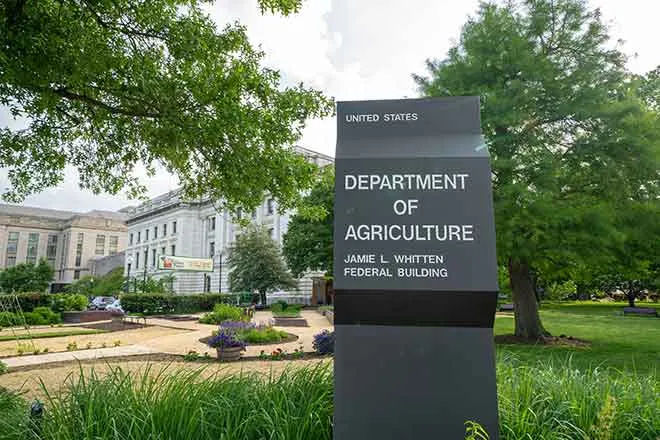
Daily Audio Newscast Afternoon Update - October 2, 2025
© INDU BACHKHETI - iStock-1336427297
News from around the nation.
Two dead in UK synagogue attack on Yom Kippur, suspect 'with bomb' shot by police; Ohio bill would end radioactive brine spreading on roads; Arizona game officials work to protect elk during the 'rut'; IN lawmakers hear concerns over prison crowding.
Transcript
The Public News Service Thursday afternoon update.
I'm Mike Clifford.
At least two people were killed after an assailant drove a car into pedestrians and stabbed a security guard near a synagogue in England on Yom Kippur, the holiest day of the Jewish calendar.
That's from Reuters.
Greater Manchester Police said the suspect, who was believed to be carrying a bomb, was shot after they rushed to the scene at the Heaton Park Hebrew Congregation Synagogue that's located in the Crumpsville district of the city in northern England.
Meantime, a newly introduced bill in the Ohio House would ban the use of brine from oil and gas waste on public roadways.
House Bill 439, sponsored by Representatives Tristan Rader and Sean Brennan, targets a decades-old law that allows townships and counties to approve spreading the material as a de-icer and dust suppressant.
Anton Krieger with the Buckeye Environmental Network says the waste contains radium and other hazardous substances that can harm health when spread this way.
"Oil and gas waste is a salty water with radium-226, radium-228, heavy metals like benzene, toluene, ethylbenzene, xylene.
People are exposed to oil and gas waste by inhalation and ingestion.
So getting that radium into the soft tissues inside your body is really harmful.
The Ohio Department of Natural Resources has found brine samples often exceed the state's legal limit for radioactivity.
While ODOT and the Turnpike Commission no longer use the material, some local governments, including Farmington Township in Warren County, continue road spreading.
Rader says he witnessed the effects firsthand in Washington County.
Farah Siddiqui reporting.
And it's about to be mating season, or the rut for elk and other ungulates in Arizona.
Arizona Wildlife Federation's Michael Craven says freeways fragment prime elk habitat and make crossings perilous.
A major interstate, you know, for some animals, might as well be a mountain range or an ocean, right?
It's impassable.
To create a safer pathway for elk, pronghorn, and other ungulates, the state's building three wildlife crossings that will allow them to cross from one side of US interstates 17 and 40 to the other, while also creating fewer vehicle-animal collisions on the freeways and keeping migration areas intact.
I'm Mark Moran.
Ungle, at mating season in Arizona typically starts later this month when the animals are coming down from the higher elevations to rut.
Next, Indiana, where lawmakers once again are hearing warnings about the state's prison population.
Correctional facilities are nearing capacity as funding for community programs is shrinking.
Margo Oxio with the Indiana Department of Correction told a legislative committee that prisons have filled quickly after pandemic declines.
Now we're seeing an increase in our population overall.
To try to mitigate some of these issues, we have implemented a policy to allow more minimum security placements.
She says sentencing challenges and return of low-level offenders to state custody are adding pressure.
This is Public News Service.
Research on brain science shows that young people's judgment, impulse control, and planning don't fully develop until age 24 or 25.
Now programs to help adolescents thrive are building on new insights.
Studies suggest that young people between the ages of 14 and 24 tend to be more successful if programs are clear and structured around a series of rewards rather than revolving around long lists of rules and punishments.
The EKC Foundation President Lisa Lawson has just written a book on the subject called Thrive.
So there's a huge opportunity for not just education systems but also employers and nonprofits to learn more about how young people are motivated, what we can reasonably expect of them during this time period and how to help them be most successful.
Lawson says research and conversations with young people show that teens require five essentials to thrive.
Basic needs like food, housing and health care, a caring adult who will stick with them, a good education, career opportunities and an outlet to show leadership.
I'm Suzanne Potter.
And many funding and service questions arose this week when the federal government went into shutdown mode.
For nutrition aid, public health officials in North Dakota have guidance.
Policy analysts say for now services like the Supplemental nutrition a program for women infants and children known as WIC should carry on without disruption.
Erin Arata leads Western Plains Public Health which administers WIC benefits in five counties.
She says according to state officials it's business as usual and those eligible can still use their cards at grocery stores.
We do serve a pretty large region with our WIC program and we do have steady participants and busy days with many appointment scheduled.
The National WIC Association agrees existing federal funds should keep things running temporarily.
I'm Mike Moen.
Finally, five years after the Alameda fire destroyed more than 3,000 homes and businesses in southern Oregon, the cities of Talent and Phoenix are prioritizing energy efficiency, affordability, and wildfire resilience as they rebuild.
Phoenix worked with Energy Trust of Oregon to build a new energy-efficient public safety building to replace facilities lost in the 2020 wildfire.
The 20,000 square foot hub houses city offices, police and fire services.
Phoenix City Manager, Eric Swanson, says with the help of local, state and federal partners, the city has been able to make the best out of a tragic situation.
We've been able to take advantage of a lot of energy efficiency initiatives in our building, which I think has really set us up well for the future.
We're planning for the worst, hoping for the best.
The building's energy efficiency measures, including efficient lighting, HVAC systems, and stormwater management are expected to save thousands of dollars annually.
I'm Isabel Charlay.
This is Mike Clifford for Public News Service.
Member and listener supported.
Find our trust indicators at publicnewsservice.org.
















